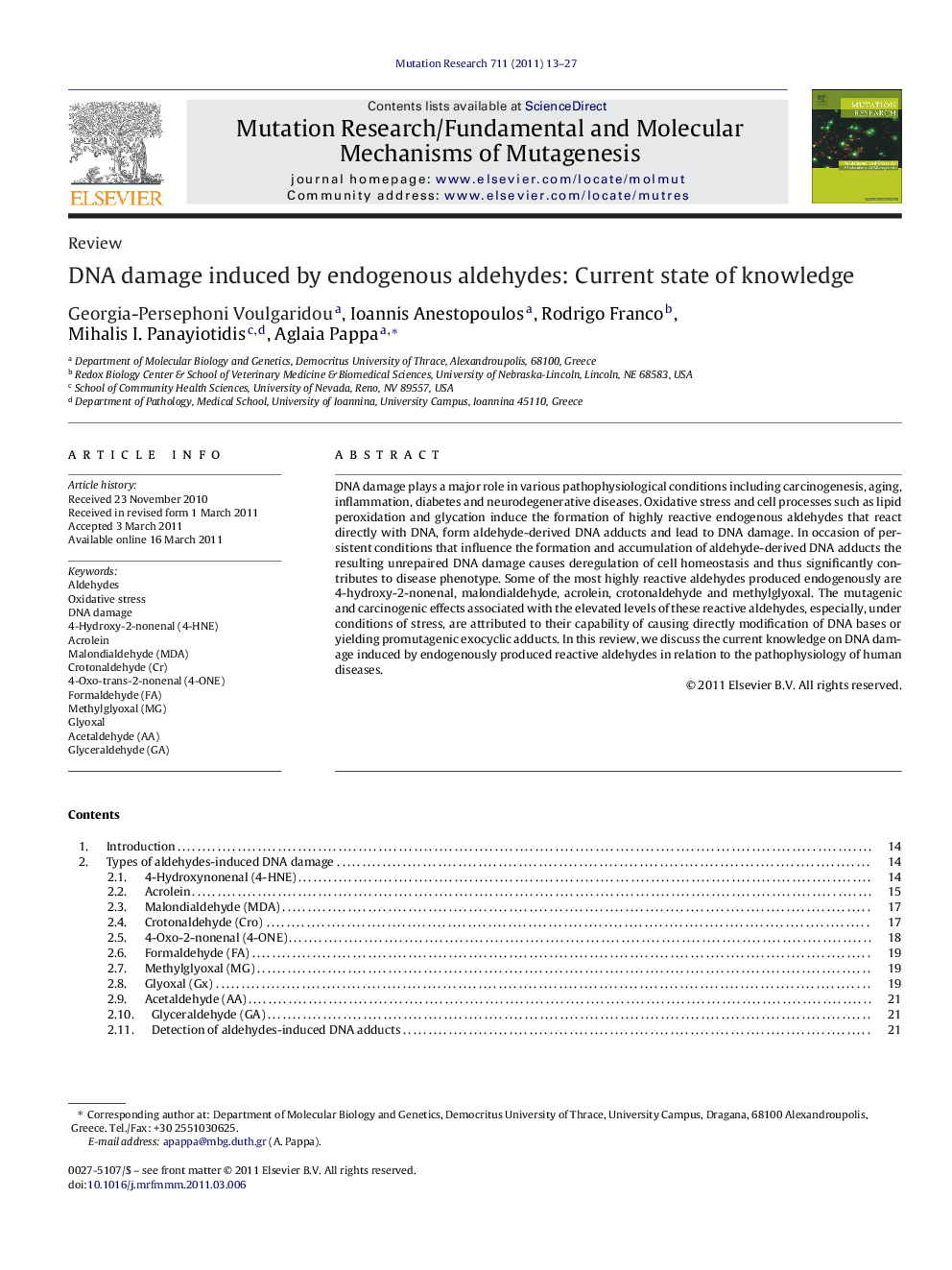| Article ID | Journal | Published Year | Pages | File Type |
|---|---|---|---|---|
| 8455983 | Mutation Research/Fundamental and Molecular Mechanisms of Mutagenesis | 2011 | 15 Pages |
Abstract
DNA damage plays a major role in various pathophysiological conditions including carcinogenesis, aging, inflammation, diabetes and neurodegenerative diseases. Oxidative stress and cell processes such as lipid peroxidation and glycation induce the formation of highly reactive endogenous aldehydes that react directly with DNA, form aldehyde-derived DNA adducts and lead to DNA damage. In occasion of persistent conditions that influence the formation and accumulation of aldehyde-derived DNA adducts the resulting unrepaired DNA damage causes deregulation of cell homeostasis and thus significantly contributes to disease phenotype. Some of the most highly reactive aldehydes produced endogenously are 4-hydroxy-2-nonenal, malondialdehyde, acrolein, crotonaldehyde and methylglyoxal. The mutagenic and carcinogenic effects associated with the elevated levels of these reactive aldehydes, especially, under conditions of stress, are attributed to their capability of causing directly modification of DNA bases or yielding promutagenic exocyclic adducts. In this review, we discuss the current knowledge on DNA damage induced by endogenously produced reactive aldehydes in relation to the pathophysiology of human diseases.
Related Topics
Life Sciences
Biochemistry, Genetics and Molecular Biology
Cancer Research
Authors
Georgia-Persephoni Voulgaridou, Ioannis Anestopoulos, Rodrigo Franco, Mihalis I. Panayiotidis, Aglaia Pappa,
